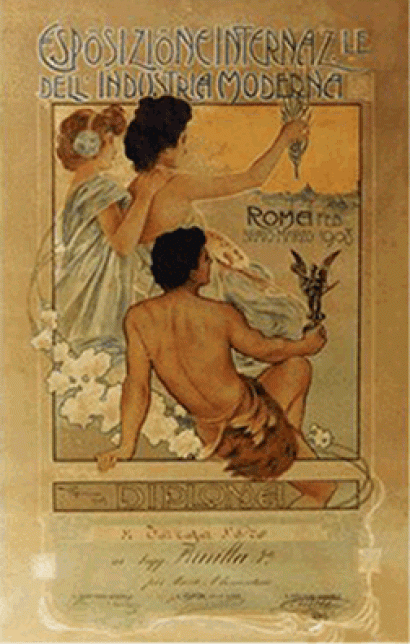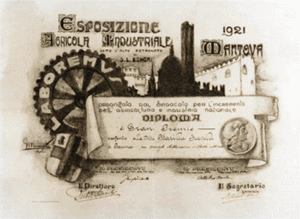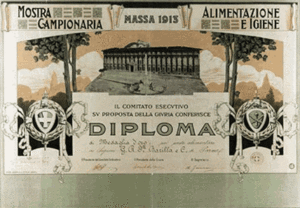Advertising architecture

It’s useful to recall that in the wide range of the expositions realized by Barilla from the first years of the XX century up to the current days, a rigorous expositional method has been constantly adopted.
By building a simple internal space, both cozy and well structured, which communicates to some extent with the external environment, the designer in charge has always limited to “comment” the “things” exposed, so that he provided to the sight or to the meditation of the public packaging or ideas worth remembering. It’s necessary to underline that the participation of Barilla to the fair meetings before the was aimed at satisfying not the expectations of the public but, in particular, the one of the operators which were active in the pasta production activity.
Until the first half of the century, in fact, the shops were provided with pasta without packaging and the only guarantee of genuineness and hygiene was the reliability of the Brand in a period in which the industrial production had not reached the quality standards that make the difference. For this reason, it was extremely important for every company to show with the products, plants and buildings, to confirm the praised technological and manufacturing progress.
Barilla entrepreneurial way of doing is shown also through the precociousness of the initiatives. When in 1908 the Company was recognized only for the presence of a bread and pasta shop in Parma city center, it found a way to take part in the International Exhibition of the Modern Industry in Rome, where it obtained the Golden plaque Diploma for pasta products. Similar prestigious awards would be given to Barilla at the Food and Hygiene sample Exhibition set up in Massa in 1913 and for the Industrial Agriculture Exposition that took place in Mantua in 1921, to which some prestigious recognitions would follow in Turin, Milan and Rome.
However, it will be during the second postwar period that, thanks to the brilliant design projects by Erberto Carboni, Barilla could reach respectful levels on the international fair stands scenario.
Starting from the period before the war, Carboni was already engaged in the realization of “advertising architectures” for the fairs and expositions, thanks to an extraordinary richness of commissions and opportunities.
It’s sufficient to remember here just to name a few, the settings of the Italian Aeronautic Exposition at the Triennale of Milan in 1934; the Agip stand at the IX Salone Internazionale dell’Auto, Milan 1936; the International Exhibition of the Catholic Press, Vatican City, 1936; the Motta and Navigazione Italiana pavilions at Milano Fair, 1937; the Montecatini pavilion in the “Chemical Products” hall, Milano Fair, 1939; the Overseas Exhibition, Naples 1940; the Italian Agriculture pavilion, Zagabria, 1942; the Italian decontamination Exhibition, Sofia, 1942; the RAI pavilion, Milano Fair 1949; the Montecatini and RAI pavilion, 1950; the Giuseppe Verdi memorial outfitting, RAI pavilion, Milano Fair, 1951; the Graphical Arts Hall at Triennale of Milano in 1951.
Carboni, after some advertising contacts, would be recruited by Barilla in 1953 for the outfitting of the pavilion of the Conserve Alimentari di Parma Exhibition, when his name and his works are by now marked on the pages of the most quoted architecture magazines, not only on a national scale.
Less known, but in any case of high level, is the activity made by the carpenter who works with ebony Medardo Monica, from Parma, material executor of the stands designed by Carboni for Barilla, underlined by the approval of the most refined critics.
We want to recreate here a short outline of this wide activity of stand design that saw Barilla engaged – and constantly careful to the quality of the proposals – from the end of the century up to the current days.

